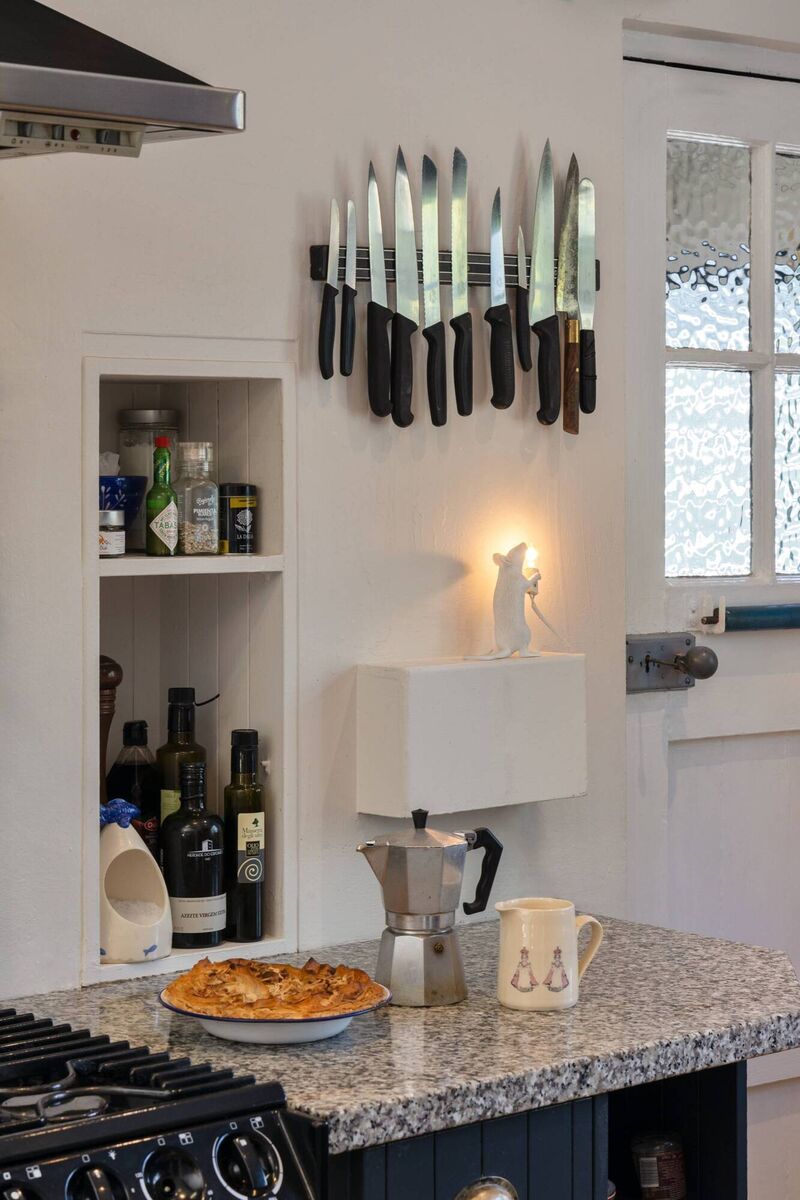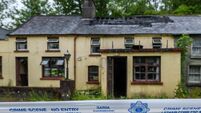Glory be: the decades have been kind to Cork's €625k The Rosary

Opened up interior of The Rosary 4 Ballincurrig Park Douglas, modestly guided from €625,000 by Stephen Clarke of REA O'Donoghue Clarke
|
Douglas Road, Cork City |
|
|---|---|
|
€625,000 |
|
|
Size |
119 sq m (1,280 sq ft) |
|
Bedrooms |
3 |
|
Bathrooms |
3 |
|
BER |
D1 |
THE decades have been kind to this superbly located home called The Rosary — it’s a classic semi-detached build associated with chi-chi Ballincurrig Park, wears its c 70 years of age elegantly, and faces some of Cork city’s finest (and even older) private period houses on discrete grounds on the main Douglas Road….it’s in very good company.


Today, still reflecting grandeur, they are in the multi-million euro value league if ever put to market. Half a century later on after those late Victorian/Edwardian beauties laid down market for desirable residences, along came the cul de sac Ballincurrig Park, with a handful of semi-s marking the 1950s estate’s presence on the main Douglas Road, of which The Rosary is one, also known as 4 Ballincurrig Park.

It’s only ever had a handful of owners, the current owners have been here for over 20 years, cared for it and curated it, enhancing its charming original features and bought it, the woman of the house smiles, from a family called Sellers, a case of nominative determinism she’s never forgotten.

Now, she’s a seller, it’s trade down time and as The Rosary comes for sale with a modest-seeming €625,000 AMV quoted by impressed estate agent Stephen Clarke of REA O’Donoghue Clarke it reflects the owner’s two professional strengths: a flair for interior design and tailoring homes with due respect, as well as a reputation as an innovative gourmet chef.

The hands behind The Rosary previously had a city centre design shop , in the 2000s on Cork’s MacCurtain Street (and also worked on high-end home design briefs for clients), and she also worked entrepreneurially in the food/hospitality sector across a number of enterprises.
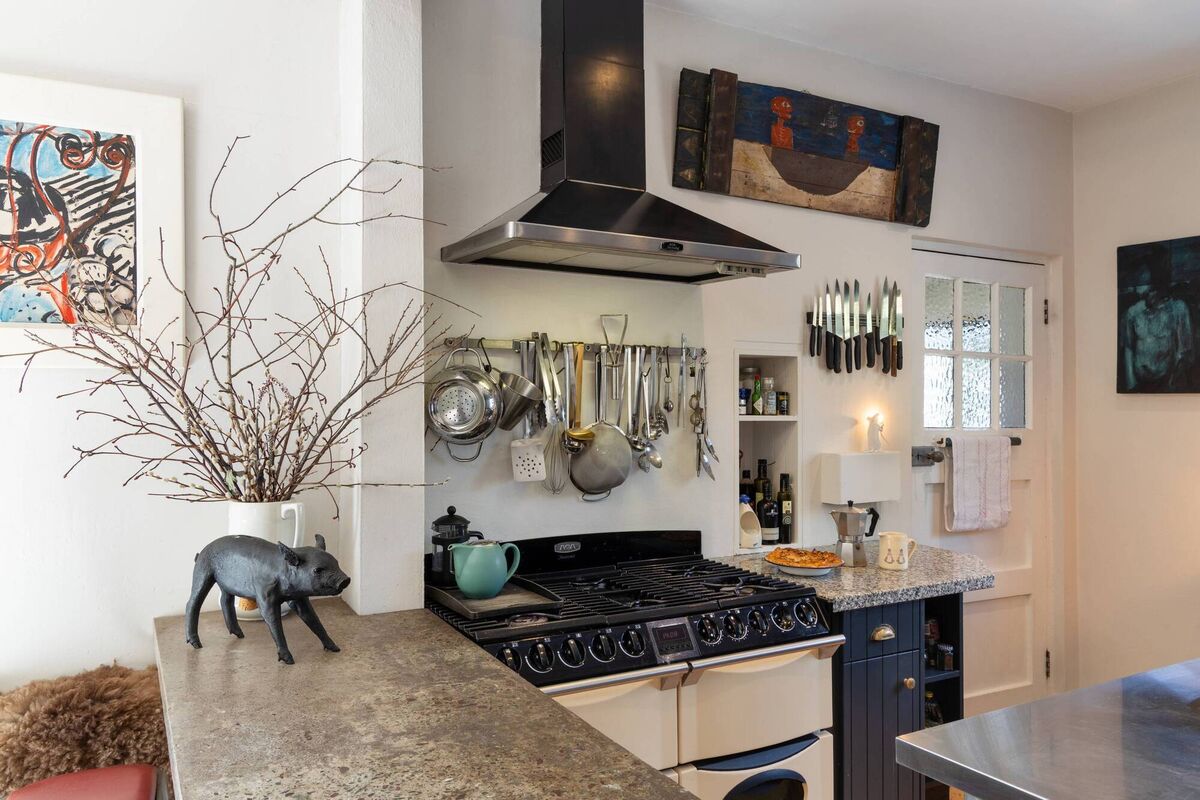
The kitchen here is testament to graft, almost semi-professional in its efficiency and thanks to its adjacent pantry, and to its cleverly created food larder, it must have prepped meals for many thousands of appreciative recipients down the years: if tummies could talk, they’d say grace after meals for the miracle of loaves and dishes from The Rosary.

The Rosary was a four-bed when it last sold, but the owners skillfully turned it into a three-bedroomed home with a well-proportioned private en suite bathroom added on to the back, south-aspected main bedroom.

As a big family home wasn’t really needed, the owners adapted the ground floor to their own living needs, opening up the level with aplomb to create a double aspect, front to back living/dining room with access to a raised deck via double doors.
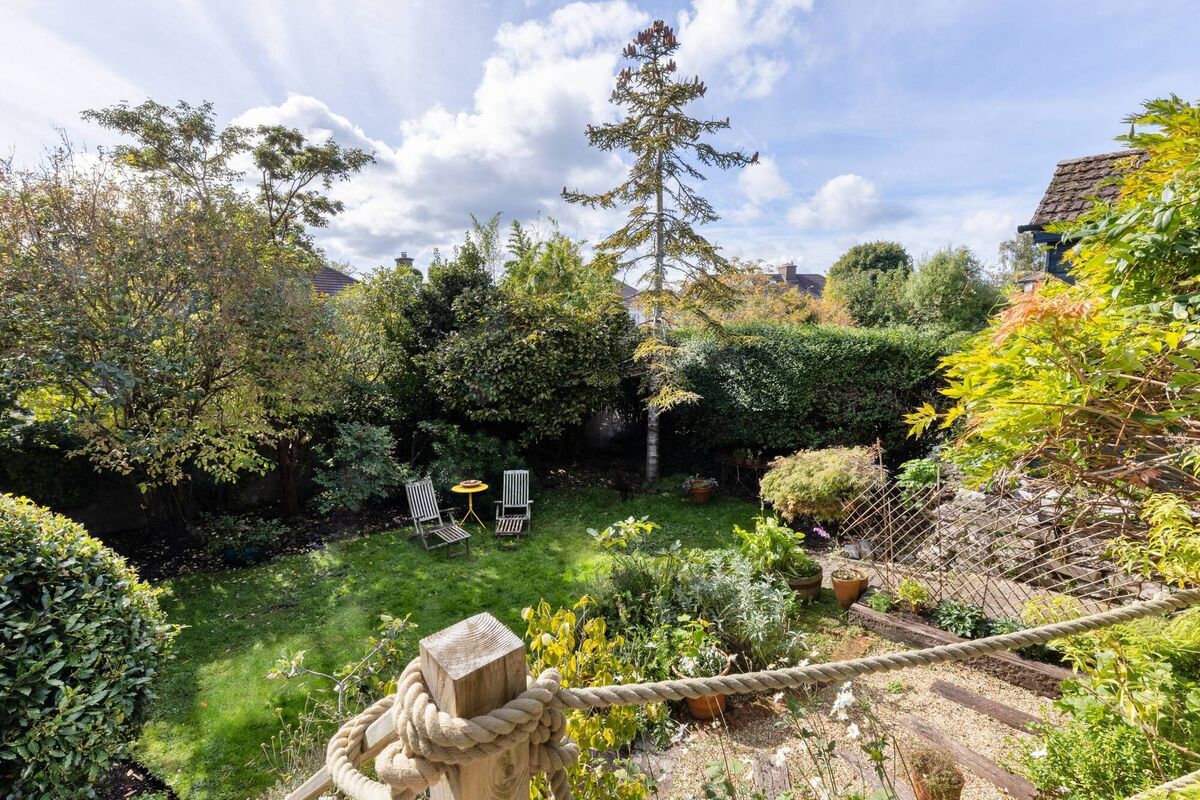
It overlooks a very sheltered back garden, a south facing sun trap ringed by mature trees, favoured by birdlife, especially the very tall pine tree planted in a back garden corner as an outdoor Christmas tree for a son the first year or two of coming to live here atop Ballincurrig Park at No 4.
When last changing hands in the early 2000s, The Rosary got work done sensitively, inside and outside, mindful of its mid-20th aesthetic and with garden planting that has since given increasing pleasure, colour, screening and scents in mind.
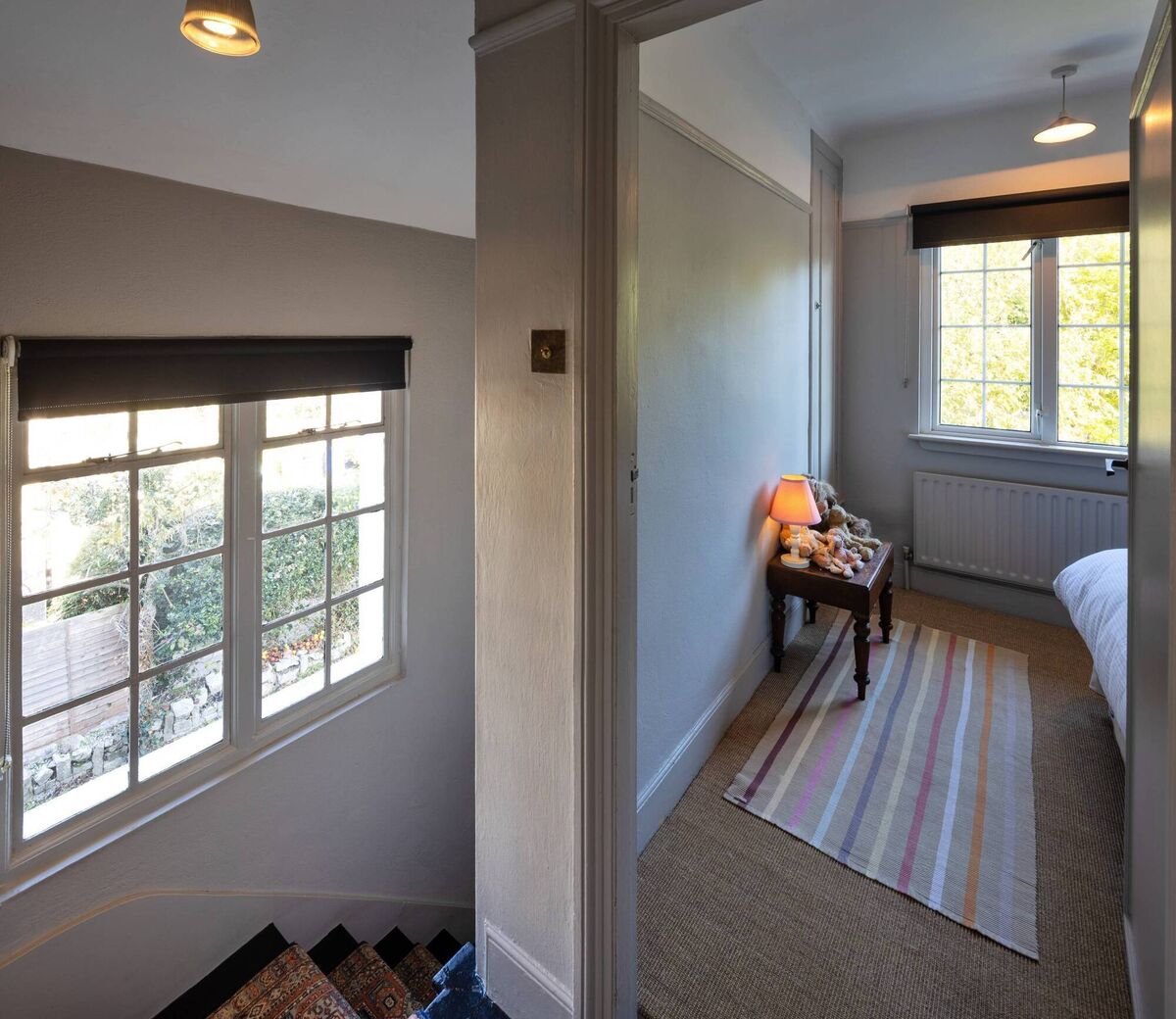
A quite high front boundary wall gives privacy in any case, enhanced then with planting inside that includes climbers bearding the corner, climbing hydrangea, silver birch, pink and white magnolia trees, cordyline, azaleas and peonies, and there’s good off-street parking frontand side on gravel, with a substantial lapped timber garage plus shed towards a side and a back boundary.

Out back, initial planting was by Ronan Nangle with acers, magnolias, lilac and a stunning Italian jasmine that flowers for six months “with a heavenly scent, all planting was carefully chosen, with scent in mind.” Later comes wild rose, two of them now mature with a flowering wisteria filling the back wall and double doors to the interior, with scent drifting up to the bedroom overhead also.
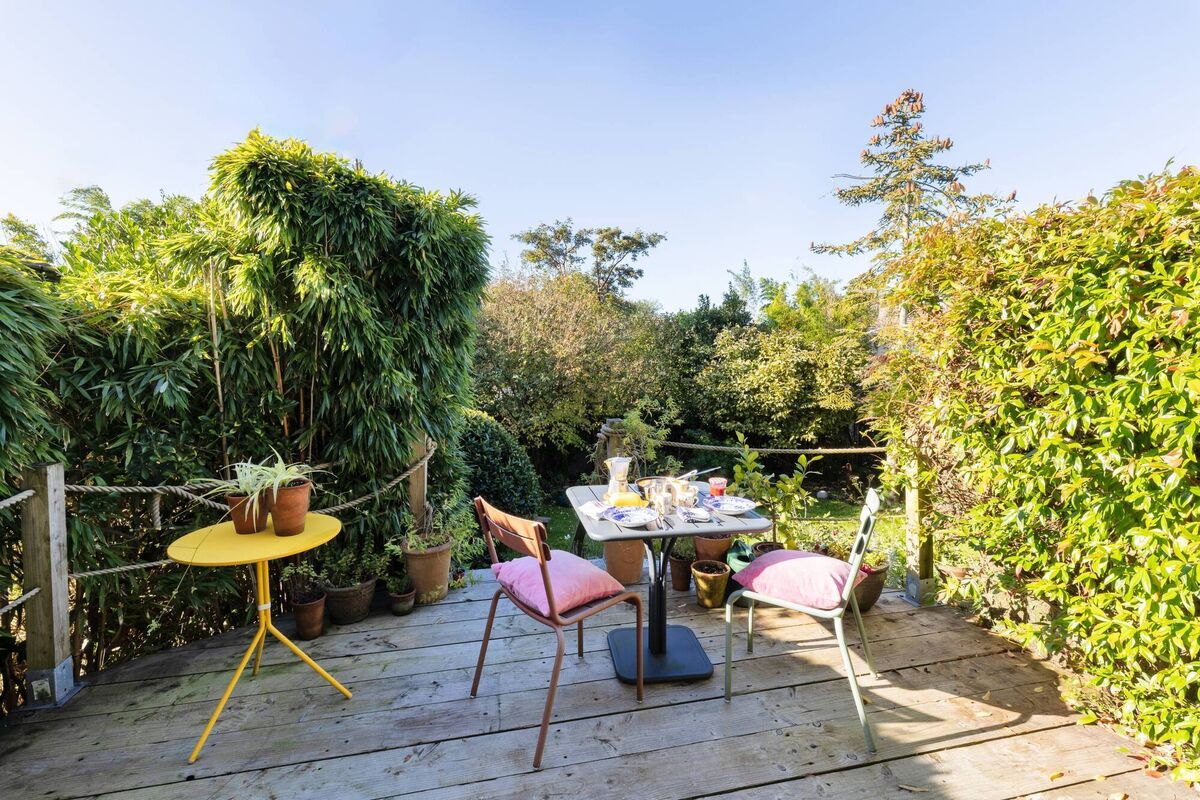
Other senses get stimulated, such as visually feeding the eyes and to taste, with an extensive herb garden, including fennel, sorrel, tarragon, sage and more, all used in cooking from the ergonomically efficient kitchen a few paces away: farm to fork? This is on a micro-level.

Then, lest things go in any way twee, this ancient old beam lending a sort of French Provencal air contrasts visually with an exposed steel RSJ in the ceiling now between the what would have been the two original distinct reception rooms: this considerable opening up and bracing work was done by top firm Cumnor Construction.

Joiner/carpenter Rory McLiam did a kitchen island in birch ply with poured and polished concrete top, a match for flecked granite tops on the other side of the wide Aga range with gas hob and electric ovens. Rory McLiam also did radiator covers, floating bookshelves, stacked with cooker books, unsurprisingly and — a stroke of spatial genius — created a capacious larder press behind double doors in a space which would have linked the kitchen to the hall, left surplus to requirements after the three ground level rooms all joined up as one almost penthouse suite.

The Oriental stair runner is in a velvet pile, hand-finished, sourced from Casey’s and easily follows the stairs turn and return, while the hall floor is original oak, with painted floors in the double up reception rooms and terrazzo floor in the kitchen, with tiling and masses of shelving in the stepped down utility room, where every size pot and pan plus kitchen appliances are stored, out of sight, yet but right at hand.


Garden furniture comes from O’Brien Office Supplies; there’s just shy of 1,300 sq ft inside, but No 4 both feels and looks bigger, thanks to the stepped back exterior and varied roof profile which these homes share with others inside on Ballincurrig’s western flank: some other Ballincurrig pairs are far plainer.
Douglas’s The Rosary is lifted to a high visual plane too by dint of curated art collected over decades; paintings; papier mache dogs by Tom Campbell; some eclectic furniture choices, from antiques via family; a gilt mirror from Hugh McPhillips in Marshs;, chandeliers, a Philippe Starcke Ghost chair by Kartell , Eileen Gray-style table, Conrad coffee table, and lighting from a mix including Flow, a Bauhaus lamp from Technolumen, and side lights by Bestlite by Gubi.

Distinctive too is the way several rooms have ceiling lights deliberately set off centre, placed by windows instead of centrally: photographer Jan O’Connell who has a specialty in architectural images says it’s a feature she’s aware of in other homes in the Douglas locale and wider afield and is reckoned to be an adaptation used by canny architects to add privacy to domestic and other rooms as it restricts view into those rooms’ interiors and occupants’ internal movements.
